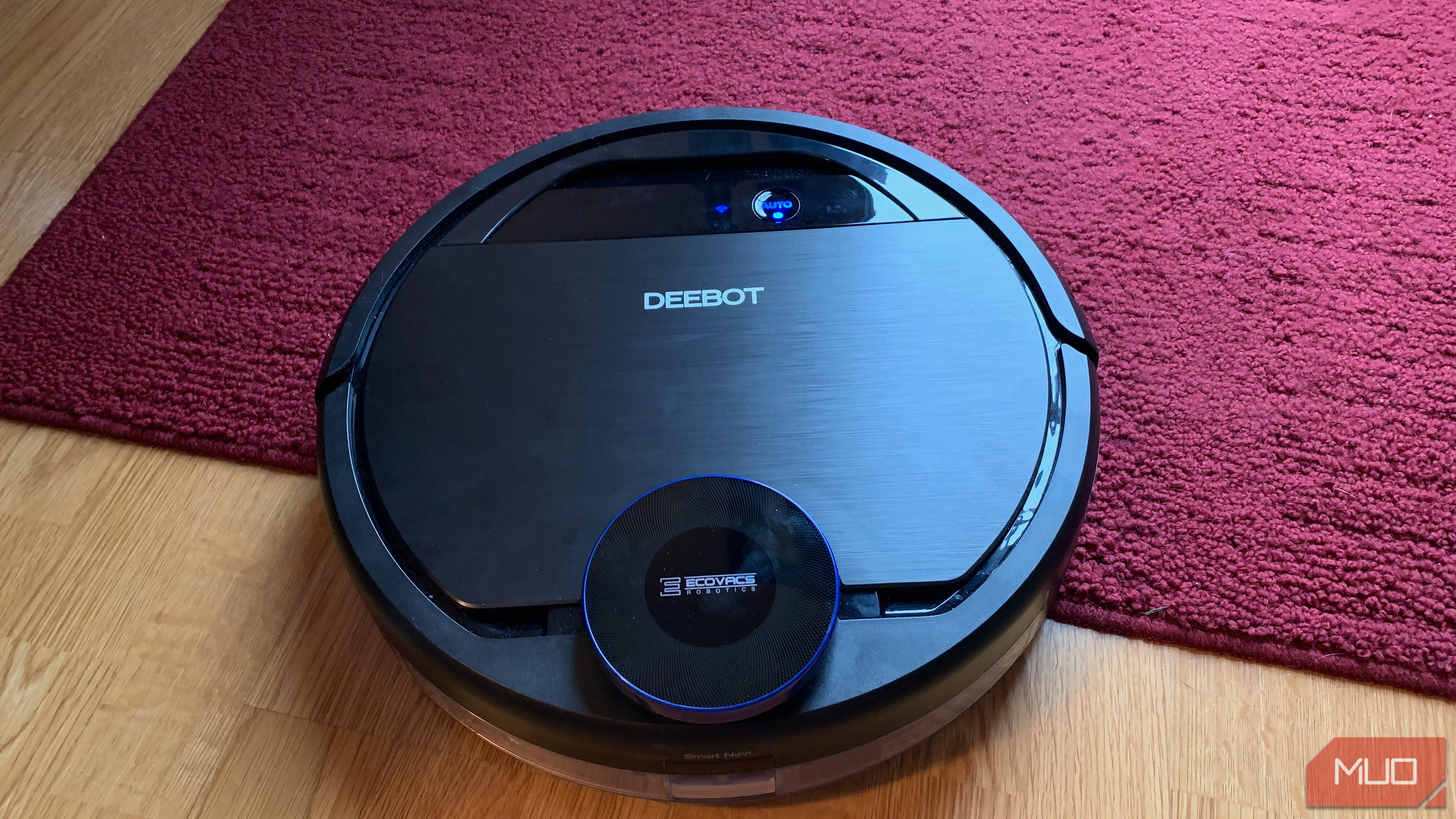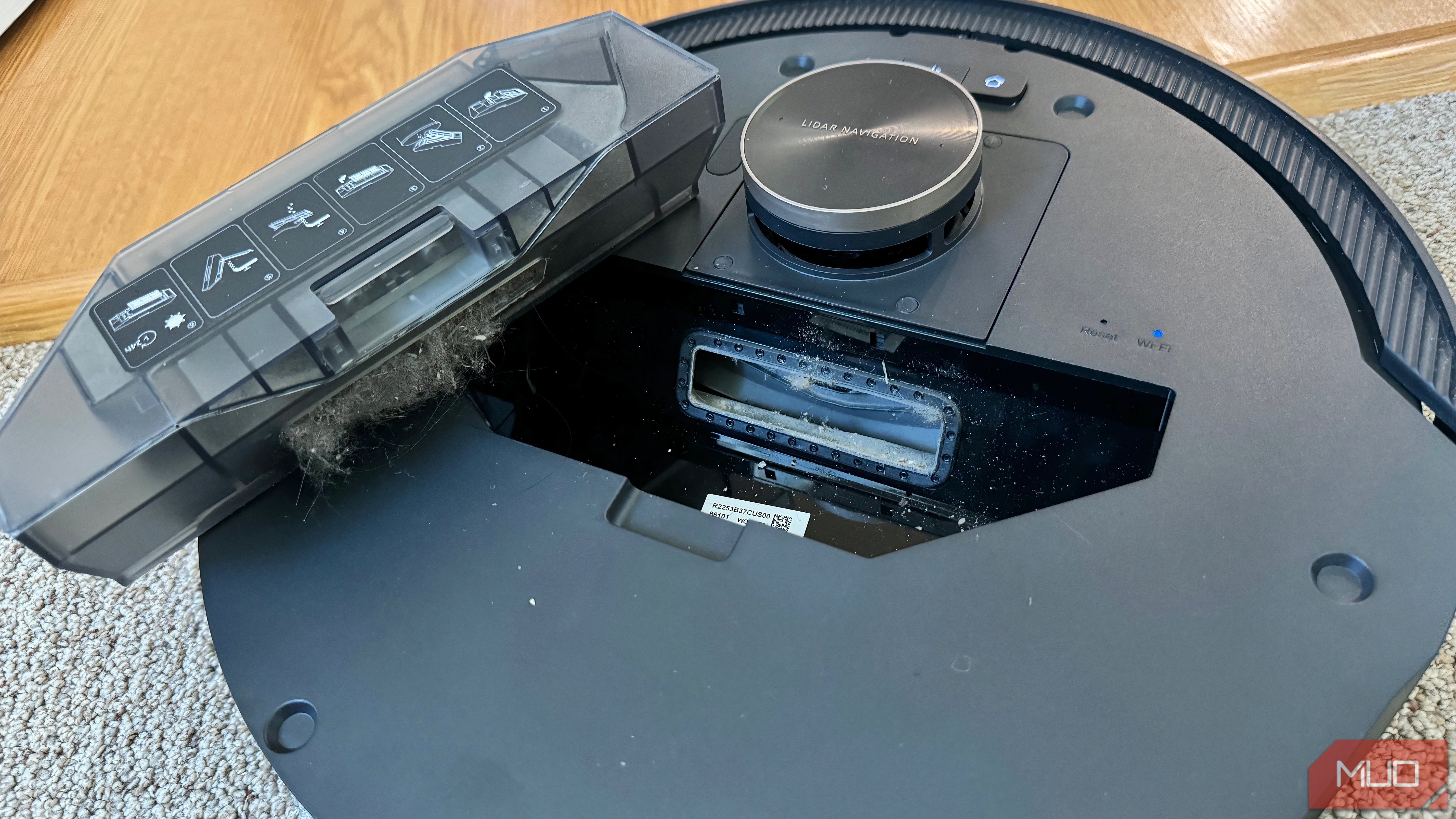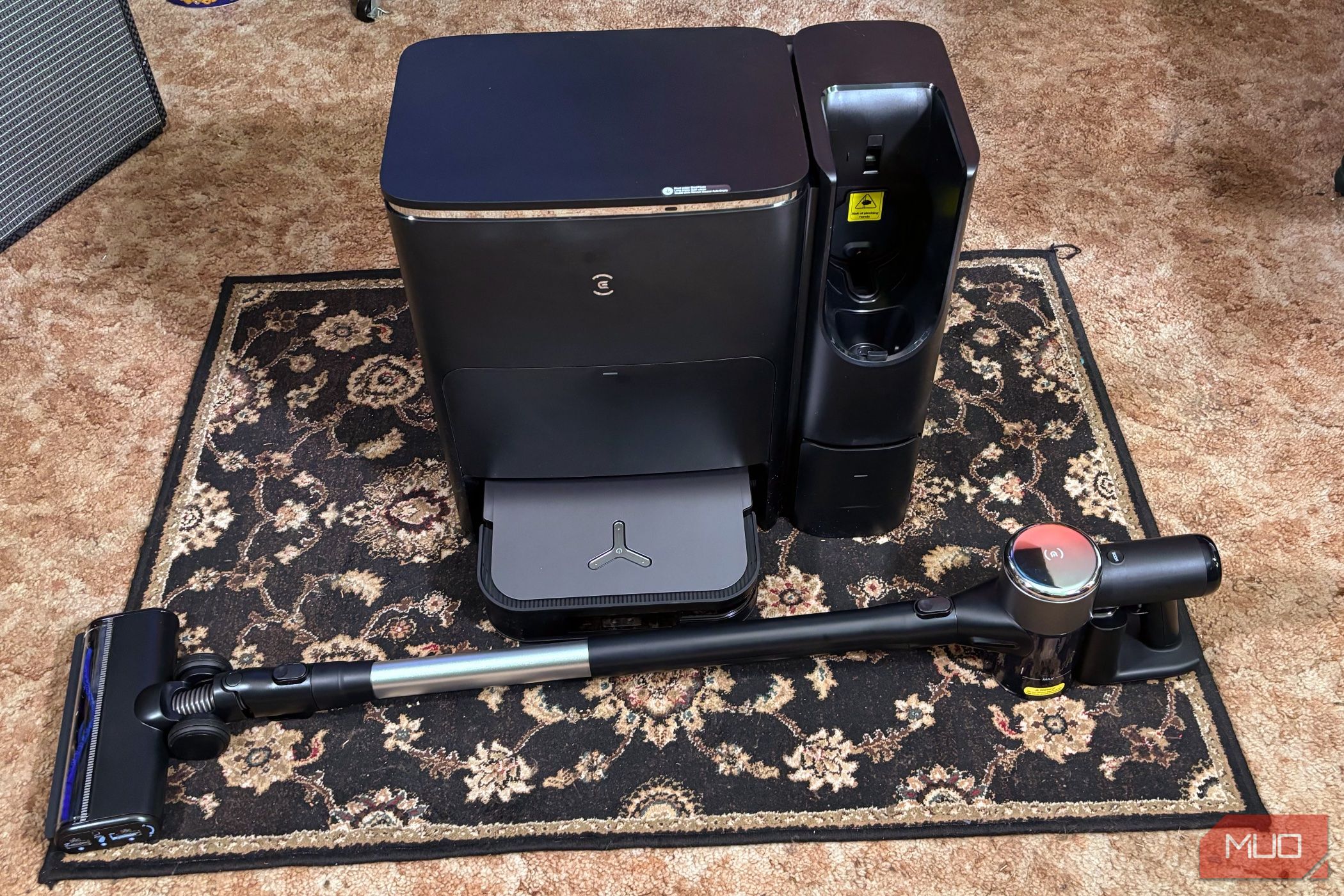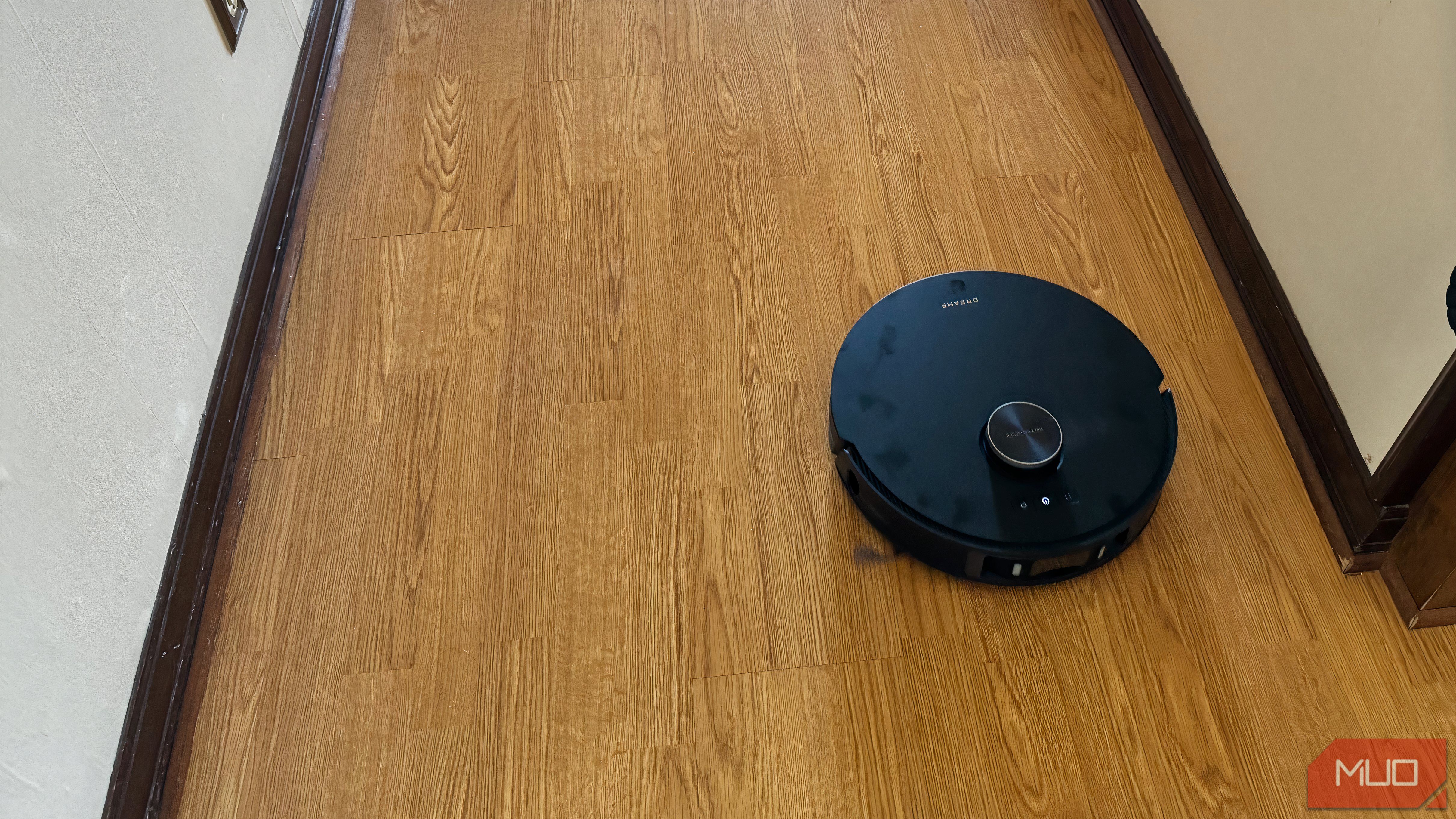Vacuum robots get a lot of hype, but I found they don’t live up to it. Despite their many promises, I’ve given up on robot vacuums—and it’s not just for a single reason.
My History With Robot Vacuums
Long ago, I was asked to review my first robot vacuum. It was an iRobot from Roomba, and from what I can recall, I was impressed with it for one reason: it did a great job of picking up dog hair (at least on the surface).
Over time, as more brands became available, I had the opportunity to use various robot vacuums, including those from Roborock, Ecovacs, Dreame, and Eufy. Each one I evaluated was generally better than the previous. For example, earlier robot vacuums had difficulty navigating around objects, but later models certainly did not. Over time, they have also improved their ability to transition between surfaces, such as moving from carpet to hardwood.
In addition to getting smarter, robot vacuums now include tons of features. Many now come with a docking station that features self-emptying capabilities. Still others can mop your floors. These new features do not come cheap, with the most expensive robot vacuums priced at around $2,000.
This all sounds great at first, but my extended experience was more sour.
5
“Set It and Forget It” Never Happens
One of the most significant selling points of buying a robot vacuum is that it eliminates the need for manual vacuuming. In theory, all you have to do is push a button to get a spotless home. But for this to happen, a lot of setup is required.
For example, most robot vacuums can avoid your dog’s toys or your shoes. However, if you don’t move them, the machine avoids all those areas. So you still need to pick up the clutter for a proper cleaning job.
And despite the many advances, there are still objects these robots have a harder time avoiding. Blankets or pieces of clothing can get stuck in its rollers, or worse, stray charging cables suddenly get sucked up into its body and need to be removed before it can continue a job.
You also need to continuously empty the cleaning bin, whether it’s one built into the vacuum or located in the docking station. Sure, by using the latter, you have to do it fewer times, but you have to do it nonetheless.
Additionally, robot vacuums require regular maintenance. This means cleaning the rollers frequently to remove tangled hair and ensuring dust doesn’t accumulate on the underside of the machine. Cleaning the filter regularly is also essential.
You also need to replace many parts on a monthly or yearly basis. These costs can add up, and getting replacements isn’t always easy.
4
The Useful, but Difficult to Use, App
I also take issue with the built-in navigation tools on these robot vacuums. There are various ways to control the vacuum, but to benefit the most, you need to download an app and learn all the tricks. At a minimum, you can use a remote controller that comes with some machines, or turn it on/off using a button on the machine itself.
You don’t need to use an app to operate a robot vacuum. The vacuum can still learn the dimensions of the rooms it needs to clean and identify the types of surfaces it encounters. However, to maximize all your robot can do (and what you paid for), you need to learn to use its app.
For instance, through the app, you can set up “no-go” zones to protect specific areas of your home. You can also program the vacuum to avoid entire rooms, either selectively or every time it starts cleaning. Additionally, the app is necessary for downloading new firmware updates and displaying error messages in the event of any issues.
The app will also alert you when the vacuum’s dust bin needs to be emptied and, if your model includes mopping capabilities, when the docking station’s water tank needs to be refilled. It will also notify you when certain parts require replacement or cleaning.
These all sound like great, beneficial features. Yet, how many people want to go to the trouble of learning everything, or will quickly grow tired of doing so? Even as someone who covers tech for a living, I’ve found some of these apps too tricky to use. But because I recognize how much I paid for these robots, I’ve always felt I had no choice but to at least attempt to learn all the machine’s features.
3
The “Clean” Is Way Below My Standards
No one would ever accuse me of being a neat freak. However, I know when something is spotless and when it’s not. Over time, and after going through many vacuum robots, I’ve concluded that these machines do only surface-level cleaning; nothing more and nothing less.
One time, I used my Dyson immediately after my robot returned to its charging station and quickly realized that it had missed a lot of debris embedded in my living room carpet. Once that happened, I performed some trial-and-error tests, deliberately putting items like coffee grounds, cracker crumbs, and actual dirt from my yard on the carpet. Each time, the machine picked up all the pieces I could see with my eyes. But afterward, my manual vacuum picked up even more pieces that the robot had left behind.
There’s also the issue of cluttered rooms. Think of a room in your house that has a lot of clutter that’s not easily moved. For example, a teenage daughter’s bedroom that’s littered with clothes, or a home office with boxes of paper right in the center. Robot vacuums realistically have no way of spot-cleaning rooms of that type.
While their attempts are admirable, in most cases, they will identify objects as ones to avoid and give up. By contrast, with manual vacuums, you can clean the entrance of that cluttered bedroom, for example, or still go under an office desk to pick up a few dust bunnies.
2
The Hidden Costs Really Add Up
The cost of owning a robot vacuum doesn’t end with the initial purchase, though that can be substantial. Scanning Amazon and other retailers to get an idea of the current costs of these machines, I found very few for under $100 from companies I had never heard of, as well as a few “Cadillac” models that neared the $2,000 mark. In between, I found that most robot vacuums in 2025 are priced between $400 and $900.
Unfortunately, you get what you pay for. Cheap vacuums are generally considered subpar (as evidenced by the many online reviews), while the more expensive ones are often priced out of most people’s budgets. The ones in the middle are sometimes priced similarly to manual vacuums. However, if you aren’t willing to learn how to use them completely, that’s a hidden cost you need to be aware of.
There are also the continued costs you must pay for replacement parts. It eventually adds up, whether you’re talking about dust bags, replacement rollers, filters, or anything else that breaks.
And like many other tech products, robot vacuums have built-in planned obsolescence. Eventually, the company will cease updating the machine’s software and stop selling replacement parts. When does that happen? It could be two years, five, or more, but at some point you’ll be forced to move to a new one even if you don’t want to.
1
I Had to Give Up Too Much Privacy
Ultimately, among all the drawbacks of robot vacuums, I gave up using them due to privacy concerns. Several companies have been criticized in recent years for their methods of collecting user data. For example, as reported by Korea JoongAng Daily, Roborock has faced scrutiny over its data processing policies, with some worried that data is shared with Chinese affiliates or third parties.
In contrast, Hunton explains how Eufy has been under scrutiny regarding the security of the cameras on its devices. Another, Ecovacs, was audited by security researchers at Kaspersky. They uncovered vulnerabilities in the company’s robot vacuums, including the ability for hackers to access the live camera feed and microphone.
Then there’s the uncertainty of what kind of increased role AI will play with robot vacuums. It’s already helping these machines map homes. Coupled with the privacy concern, where does the situation go from here? Will someone nefarious have access to my house, including data showing the number of rooms it has? There’s no one at any of the companies making robot vacuums who can say with certainty the answer is no, and that’s scary.
The overarching reason I’ve moved away from robot vacuums is that they are too difficult to use and maintain over the long run. They are also loud, expensive, and still not as effective as using a manual vacuum—that’s before considering the issue of privacy, which is another concern.



